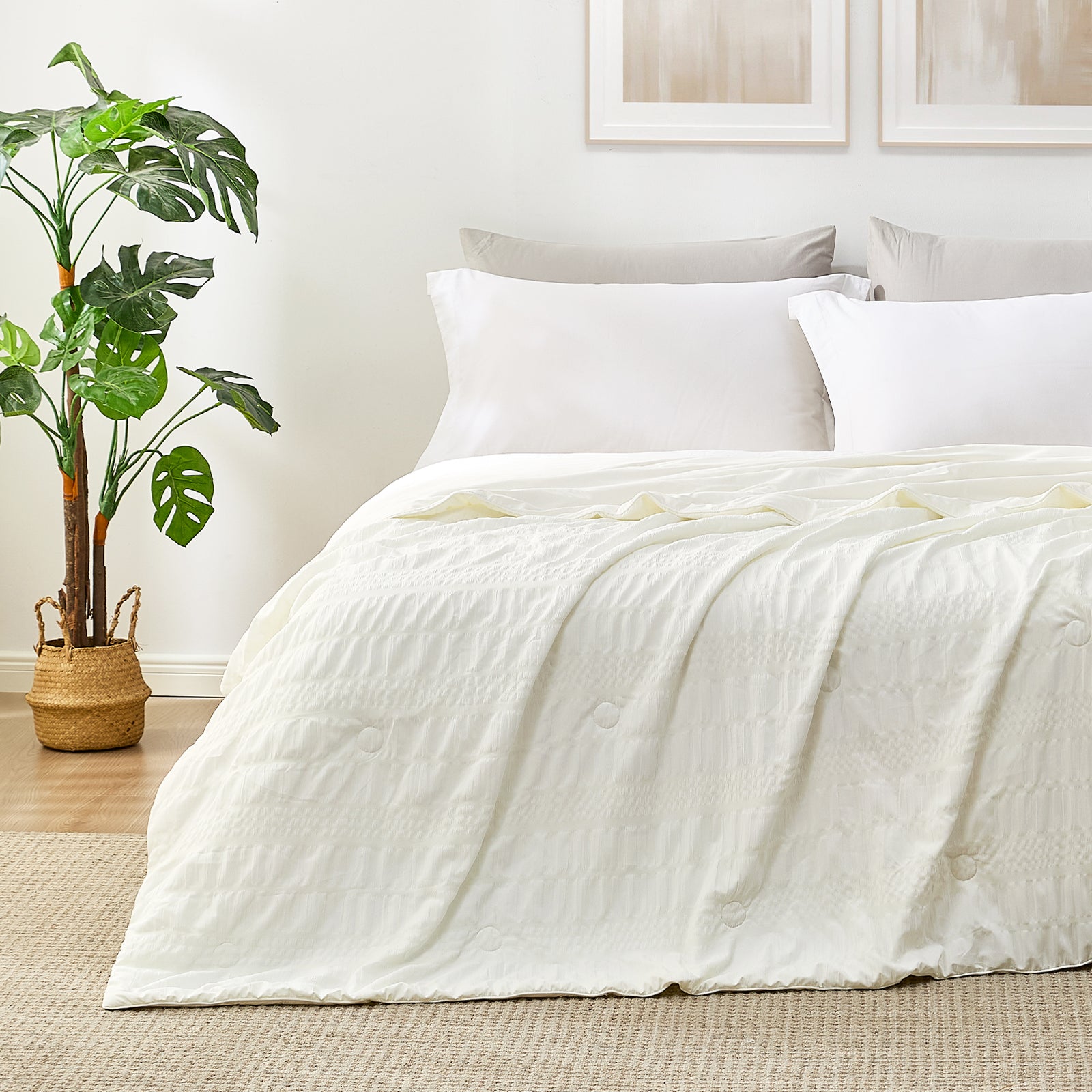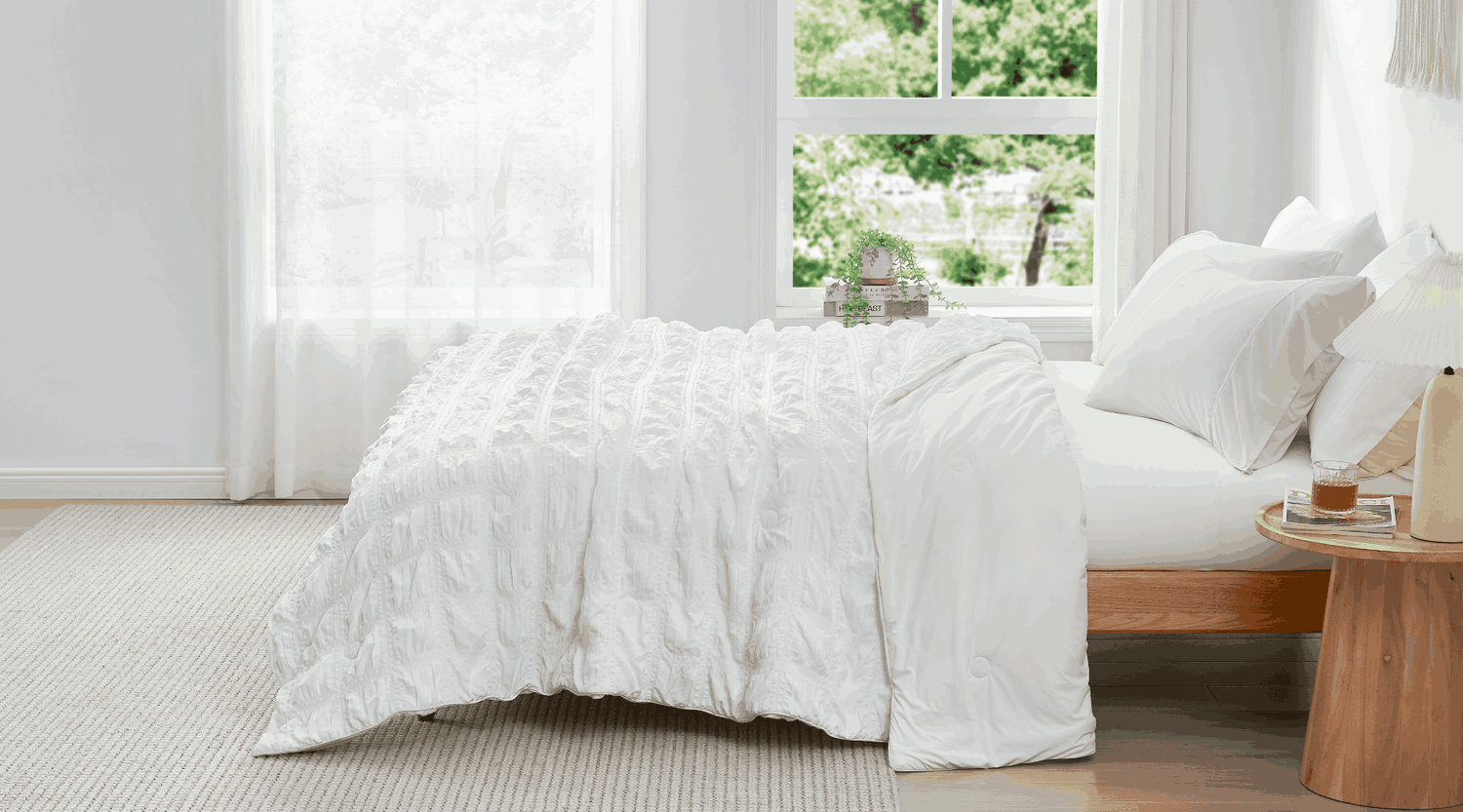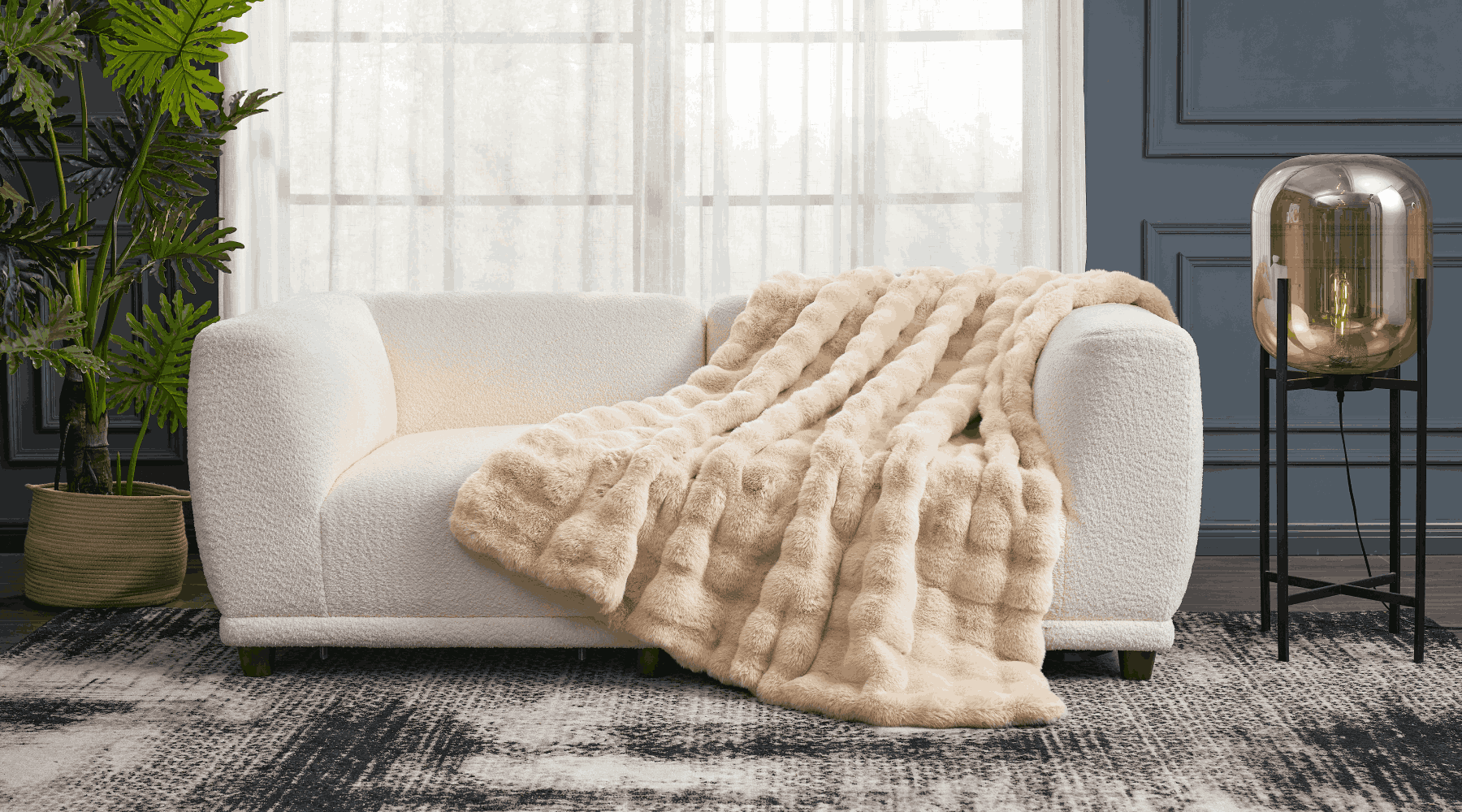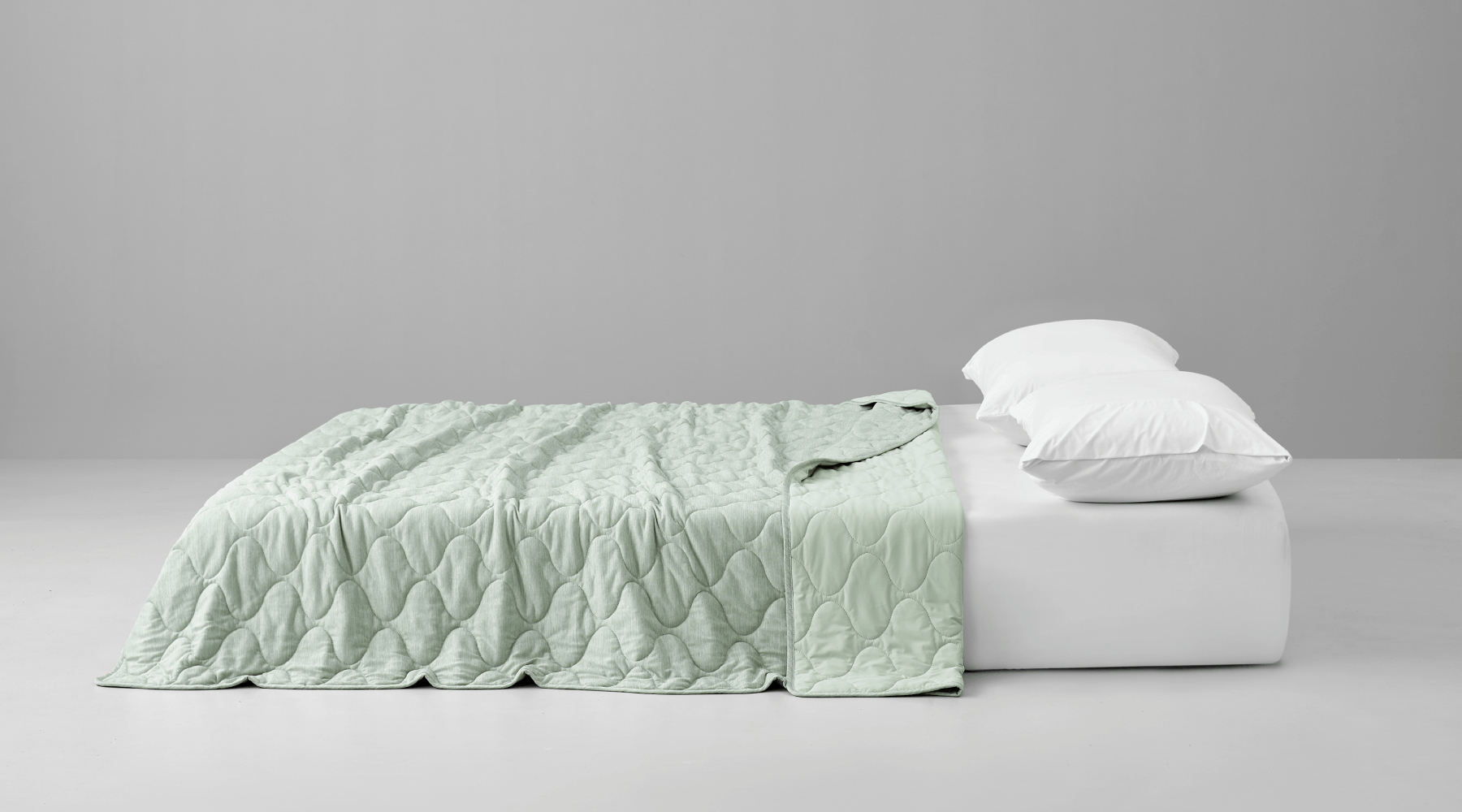Sleeping should be revitalizing, not a hot wrestle with your own bed linens. The secret to good sleep when the temperature rises is how you arrange your sheets and blankets. Strategic layering of your bedding will create the optimum sleeping micro-environment that will keep you cool all night long. The following is a guide on how to choose and arrange cooling bedding material for cozy and lasting sleep.
Basics of Bedding Layers
A bed cooling setup requires understanding how different elements of bedding work together. Each layer serves a functional and also a thermal-regulating function.
- A pad or topper is your bed's foundation for temperature control. Toppers (2-4 inches thick) offer support and cooling types make use of gel-infused memory foam or naturally cooling materials like latex to keep heat buildup from below out.
- Sheets are the layer that comes into direct contact with your skin. The fitted sheet keeps everything in place, and the flat sheet is your first free-moving layer. Their weave and fabric play an enormous role in how well moisture and heat are transferred away from your body at night.
- Blankets offer easy temperature control between your sheets and heavier coverings. A thin cotton or bamboo blanket doesn't add much heat while still maintaining a breathability factor—perfect on warm nights when a sheet isn't sufficient.
- Duvets and comforters top out your bed. While originally designed for heat, recent versions are available in lighter, airy forms geared toward hot sleepers. A comforter is factory-premade and ready to go, while a duvet requires an optional cover that can be seasonally replaced.
- Pillows also regulate temperature around your head and face—positions extremely sensitive to heat. Whether or not heat will build up or dissipate throughout the night is decided by the filling in your pillow and cover. If designed well, these layers create a sleeping environment that balances comfort with decent heat regulation. The next sections will guide you through selecting the right materials and positioning these segments to achieve maximum cooling effects.

Best Cooling Materials for Each Bedding Layer
Mattress Toppers: Choose Gel Memory Foam or Natural Latex
Gel-infused memory foam toppers actively draw heat away from your body. The gel components absorb body heat and disperse it throughout the material rather than concentrating it near your skin. Look for toppers with gel beads or swirls evenly distributed throughout the foam for consistent cooling.
Natural latex toppers offer excellent breathability due to their open-cell structure. Many feature pincore holes that create channels for air movement. While typically more expensive than memory foam, latex toppers last longer and provide superior temperature neutrality.
A topper's cover material matters as much as its filling. Opt for toppers with bamboo, Tencel, or cotton covers that promote airflow and wick away moisture. Avoid polyester covers that trap heat and humidity against your mattress.
Sheets: Select Cotton, Bamboo, or Linen with the Right Weave
Natural fibers create the most breathable sheets for hot weather:
- Cotton provides excellent air circulation, particularly in long-staple varieties like Egyptian or Pima
- Bamboo offers exceptional moisture-wicking and naturally resists bacteria growth
- Linen excels in very hot conditions, becoming more comfortable with each wash
The weave pattern affects how sheets perform in warm conditions:
- Percale uses a simple one-over, one-under weave that creates a crisp, cool feel similar to a button-up shirt
- Sateen employs a one-under, three-over pattern that produces a smoother finish but traps slightly more heat
For maximum cooling, choose percale weaves in lightweight natural fibers with thread counts between 200-400. Higher thread counts can reduce airflow despite their luxurious feel.
Blankets: Opt for Lightweight Cotton or Open Weave Designs
Lightweight cotton blankets provide minimal insulation while maintaining breathability. Cotton thermal or waffle weave blankets offer texture and interest without excess warmth due to their open structure that allows air circulation.
Some manufacturers offer blankets specifically designed with cooling technologies. These may incorporate moisture-wicking fibers or special weaves that promote air circulation and heat dissipation.
If you prefer synthetic materials, look for open-weave microfiber blankets designed specifically for summer use. These lightweight options provide just enough coverage for comfort without trapping heat.

Step-by-Step Guide to Layering Your Bed for Summer Cooling
This section covers the practical arrangement of your bedding layers for optimal cooling, building from the foundation up.
Step 1: Create a Cooling Foundation with Your Mattress Setup
Start with a breathable mattress protector. Cotton or Tencel protectors work better than vinyl or plastic-backed ones that trap heat. If your mattress still feels warm, add a cooling mattress pad underneath your protector. Many cooling pads use special materials that absorb body heat. This base layer prevents heat from building up under you while you sleep.
Step 2: Choose Fitted Sheets That Enhance Airflow
Your fitted sheet touches your skin directly, so choose carefully. Look for sheets that fit snugly without extra fabric that can bunch up. Make sure they're deep enough for your mattress and any toppers you use. Cotton, bamboo, and linen sheets in percale weave are naturally cooling.
A simple way to test sheets is to touch them—they should feel cool and smooth. Hold them up to a light; if you can see through them slightly, they'll allow better airflow. Sheets with elastic all around stay in place better than those with elastic just at the corners.
Step 3: Add an Optional Middle Layer for Adaptability
Keep a light blanket folded at the foot of your bed for flexibility. On most summer nights, you might not need it at all. But if the temperature drops or your air conditioning gets too cold, you'll have it ready.
Good options include thin cotton blankets, lightweight summer quilts, or simple gauze throws. These add a touch of comfort without much heat. Having this layer available but not automatically used gives you options if you get chilly.
Step 4: Top Off with a Lightweight Comforter or Duvet
Finish with a summer-weight duvet or comforter. Look for "summer weight" or "lightweight" labels, or a low tog rating (2-4.5). Down alternatives made for hot sleepers work well, as do natural fills like silk or light wool.
The duvet cover matters too. Choose cotton or linen covers with moderate thread counts. Lighter colors absorb less heat than darker ones. On very warm nights, fold your duvet at the foot of the bed and pull it up only to your waist if needed, or leave it off entirely.
Quick Tips to Enhance Your Cooling Bedding Setup
Once you've optimized your bedding layers, these simple adjustments can further improve your sleep comfort.
Seasonal Bedding Rotations
Create a simple three-part bedding system: summer (lightest), winter (warmest), and spring/fall (medium). Store out-of-season items in breathable containers under beds or in closets. Keep a medium-weight blanket nearby during transitional seasons for unexpected temperature drops. This planned rotation prevents scrambling for appropriate bedding when weather changes suddenly.
Enhance Bedroom Air Circulation
Position fans to create gentle air movement across your bed rather than blowing directly on your face. In summer, set ceiling fans to rotate counterclockwise for a cooling downdraft. When weather permits, open windows on opposite sides of your home in the evening to create natural cross-ventilation. Consider removing items stored under your bed, as they can restrict air movement around your mattress.
Maintain Cooling Properties
Wash cooling sheets weekly in warm (not hot) water and avoid fabric softeners that leave breathability-reducing residues. For stubborn detergent buildup, add a quarter cup of white vinegar to the rinse cycle. Dry on low heat or line-dry when possible to preserve cooling treatments and fiber integrity. For mattress pads and protectors, follow manufacturer guidelines but aim for monthly washing to maintain their cooling effectiveness.
Layer Your Bed for Cooler Sleep!
A cool, cozy bed is a function of how you set up your bedding layers, not necessarily what they're constructed of. Begin with a breathable mattress protector, followed by cooling sheets in natural fibers, have a light blanket on hand for versatility, and finish with a summer-weight comforter. Easy tweaks such as seasonal rotation, enhanced room airflow, and regular washing keep your cooling system functioning. Employ these layering techniques to put an end to fights with your bedding and enjoy the sound sleep that is offered through maximum temperature equilibrium.






Dejar un comentario
Este sitio está protegido por hCaptcha y se aplican la Política de privacidad de hCaptcha y los Términos del servicio.